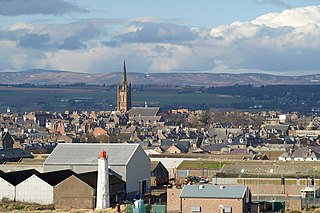
Montrose is a town and former royal burgh in Angus, Scotland. Situated 38 miles north of Dundee and 42 miles south of Aberdeen, Montrose lies between the mouths of the North and South Esk rivers. It is the northernmost coastal town in Angus and developed as a natural harbour that traded in skins, hides and cured salmon in medieval times.
Moral treatment was an approach to mental disorder based on humane psychosocial care or moral discipline that emerged in the 18th century and came to the fore for much of the 19th century, deriving partly from psychiatry or psychology and partly from religious or moral concerns. The movement is particularly associated with reform and development of the asylum system in Western Europe at that time. It fell into decline as a distinct method by the 20th century, however, due to overcrowding and misuse of asylums and the predominance of biomedical methods. The movement is widely seen as influencing certain areas of psychiatric practice up to the present day. The approach has been praised for freeing sufferers from shackles and barbaric physical treatments, instead considering such things as emotions and social interactions, but has also been criticised for blaming or oppressing individuals according to the standards of a particular social class or religion.
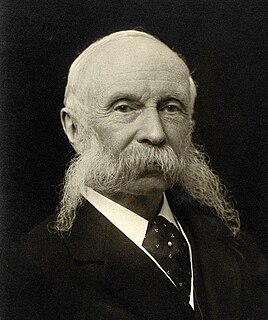
Sir James Crichton-Browne MD FRS FRSE was a leading Scottish psychiatrist, neurologist, eugenicist and medical psychologist. He is known for studies on the relationship of mental illness to brain injury and for the development of public health policies in relation to mental health. Crichton-Browne's father was the asylum reformer Dr William A.F. Browne, a prominent member of the Edinburgh Phrenological Society and, from 1838 until 1857, the superintendent of the Crichton Royal at Dumfries where Crichton-Browne spent much of his childhood.

Hillside is a village in Angus, Scotland, situated 1 mile to the north of Montrose. The village is the location for the now disused psychiatric hospital, Sunnyside Royal Hospital. The hospital which was founded by Susan Carnegie in 1781 as the Montrose Lunatic Asylum, Infirmary and Dispensary had originally been situated on Montrose links. It moved out of the town to new premises at Hillside on lands that were part of Sunnyside farm in 1858. The hospital was expanded several times thereafter, before finally closing in 2011.

NHS Tayside is an NHS board which forms one of the fourteen regions of NHS Scotland. It provides healthcare services in Angus, the City of Dundee and Perth and Kinross. NHS Tayside is headquartered at Ninewells Hospital in Dundee. It currently has one of the largest hospitals in the world and also one of the largest teaching hospitals in the world within its boundaries.

The Crichton is an institutional campus in Dumfries in southwest Scotland. It serves as a remote campus for the University of Glasgow, the University of the West of Scotland, Dumfries and Galloway College, and the Open University. The site also includes a hotel and conference centre, and Crichton Memorial Church, set in a 100-acre (40 ha) park. The campus was established in the 19th century as the Crichton Royal Hospital, a psychiatric hospital.

Dr William Alexander Francis Browne (1805–1885) was one of the most significant asylum doctors of the nineteenth century. At Montrose Asylum (1834–1838) in Angus and at the Crichton Royal in Dumfries (1838–1857), Browne introduced activities for patients including writing, group activity and drama, pioneered early forms of occupational therapy and art therapy, and initiated one of the earliest collections of artistic work by patients in a psychiatric hospital. In an age which rewarded self-control, Browne encouraged self-expression and may therefore be counted alongside William Tuke, Vincenzo Chiarugi and John Conolly as one of the pioneers of the moral treatment of mental illness. Sociologist Andrew Scull has identified Browne's career with the institutional climax of nineteenth century psychiatry.
"Browne was one of the reformers of the asylum care of the insane whose improvements and innovations were chronicled in his annual reports from The Crichton Royal Institution, but who in addition published almost on the threshold of his career a sort of manifesto of what he wished to see accomplished...." Richard Hunter and Ida Macalpine (1963) Three Hundred Years of Psychiatry 1535–1860, page 865.
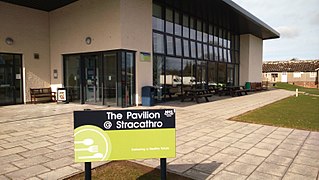
Stracathro Hospital is a community hospital in Angus, Scotland. Established as a wartime Emergency Hospital Service facility, it became a District General Hospital. Since 2005 it has been the site of the Scottish Regional Treatment Centre.
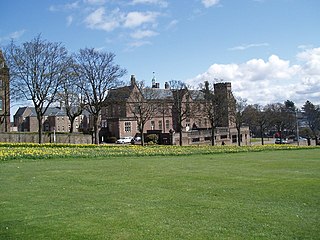
Dundee Royal Infirmary, often shortened to DRI, was a major teaching hospital in Dundee, Scotland. Until the opening of Ninewells Hospital in 1974, Dundee Royal Infirmary was Dundee's main hospital. It was closed in 1998, after 200 years of operation.

Maryfield Hospital was a hospital in Stobswell, Dundee, Scotland. Originally a poorhouse hospital it became Dundee's second main hospital after Dundee Royal Infirmary. It closed in the 1970s following the opening of Ninewells Hospital.

King's Cross Hospital, often shortened to King's Cross is a hospital in Dundee, Scotland. It is managed by NHS Tayside.

Royal Victoria Hospital, Dundee, is a hospital in Dundee, Scotland. It was formerly known as the Victoria Hospital for Incurables. Today, the hospital is primarily dedicated to medicine for the elderly. It is managed by NHS Tayside.

Murthly Hospital, previously known as Murthly Asylum, Perth District Asylum and Perth and District Mental Hospital was a psychiatric hospital in Murthly, Perthshire which operated for 120 years.

The Carseview Centre is a mental health unit in the grounds of Ninewells Hospital in Dundee, Scotland. It is managed by NHS Tayside.
The Lunacy (Scotland) Act 1857 formed mental health law in Scotland from 1857 until 1913.

The Royal Dundee Liff Hospital, previously known as Dundee Lunatic Asylum and Dundee Royal Lunatic Asylum, was a mental health facility originally established in 1812 in Dundee, Scotland. It was originally located in premises in Albert Street Dundee, but later moved out of the town to new buildings in the nearby parish of Liff and Benvie. Buildings at Liff included Greystanes House, which was the main building, and, Gowrie House, which was the private patients' facility. Both Grade B listed buildings.
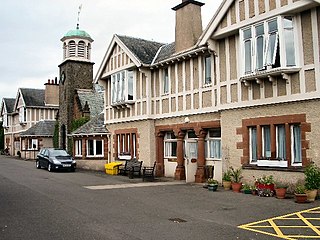
The Murray Royal Hospital is a mental-health facility in Perth, Scotland. It is managed by NHS Tayside. The original main building is a Category A listed building.
The Commissioners in Lunacy for Scotland or Lunacy Commission for Scotland were a public body established by the Lunacy (Scotland) Act 1857 to oversee asylums and the welfare of mentally ill people in Scotland.

Elizabeth Crichton was a British philanthropist who founded the Crichton Royal Hospital in Dumfries. She had wanted to create a university but it was opened instead as the Crichton Institution for Lunatics in 1839. It now holds part of several universities and in her memory: a cathedral like church and her statue,
Susan Carnegie was a writer and benefactor who helped found the Montrose Asylum, the first public asylum in Scotland.

















